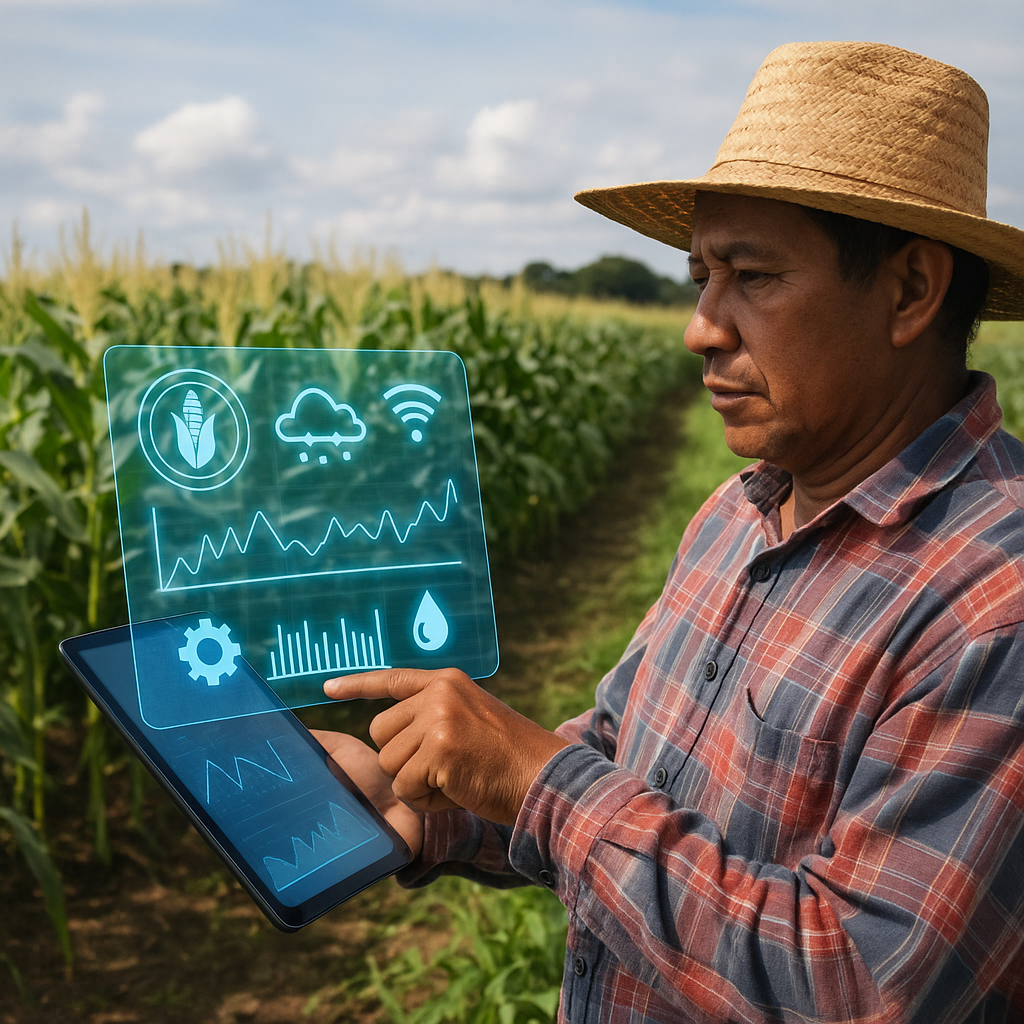Smart agriculture shows big gains in productivity, Ecuadorian farmers still struggle with costs
The high cost of implementing IoT tools emerges as the most significant negative factor in the adoption equation. The data shows a strong inverse relationship between implementation cost and willingness to adopt, meaning that even interested and informed farmers are often unable to move forward due to financial limitations.

- Country:
- Ecuador
A new empirical study reveals that smart agriculture powered by Internet of Things (IoT) technologies could significantly transform farming in Ecuador, if key economic and educational barriers are addressed. The research provides a detailed analysis of the role of IoT in boosting agricultural productivity in the province of Guayas.
The study, titled "Smart Agriculture in Ecuador: Adoption of IoT Technologies by Farmers in Guayas to Improve Agricultural Yields", was published in Agriculture. It focuses on how technological integration is evolving in Ecuador’s agricultural sector, identifies the core drivers and obstacles to IoT adoption among farmers, and evaluates the measurable effects on crop yields.
What drives or hinders IoT adoption in Ecuadorian agriculture?
The study presents a comprehensive evaluation of the various factors influencing the adoption of IoT technologies in the agricultural practices of Guayas, a key farming region in Ecuador. Farmers generally demonstrate a positive attitude toward digital innovation. This openness is attributed to earlier exposure to modernization initiatives and a growing awareness of the potential benefits of smart tools such as sensors, automated irrigation systems, and real-time crop monitoring applications.
However, economic barriers remain a major constraint. The high cost of implementing IoT tools emerges as the most significant negative factor in the adoption equation. The data shows a strong inverse relationship between implementation cost and willingness to adopt, meaning that even interested and informed farmers are often unable to move forward due to financial limitations.
On the other hand, positive influences such as general perception of the technology, its perceived functionality, and the availability of technical training are found to significantly support adoption. Farmers who had access to educational resources and understood the functional value of IoT devices showed higher levels of enthusiasm and engagement with digital tools.
The study also emphasizes the importance of technical education and institutional guidance in shaping farmer behavior. Participants with higher levels of formal education and those engaged in government or NGO-led training programs were more likely to integrate IoT systems into their operations. These insights point to a critical role for public institutions in facilitating technology diffusion.
How IoT adoption translates to measurable yield improvement
The research provides compelling evidence that IoT implementation leads to significant gains in agricultural productivity. The use of smart technologies enables farmers to optimize irrigation, improve soil health monitoring, and respond more effectively to environmental variables. The data shows a robust and statistically significant correlation between IoT adoption and increased crop yields.
The effect size reported in the study is notably strong, with a high level of explained variance, demonstrating that IoT tools are not merely peripheral upgrades but central to performance improvement. For farmers in Guayas, the deployment of connected systems translates into tangible results, better resource allocation, reduced waste, improved timing of agricultural activities, and ultimately, greater output.
Importantly, the study situates these findings within a sustainability framework. The technologies being adopted not only improve short-term yield but also contribute to longer-term environmental and economic sustainability. Smart irrigation, for example, conserves water while improving plant health. Predictive analytics help minimize overuse of fertilizers and pesticides, reducing ecological harm.
This empirical validation strengthens the case for scaling up smart agriculture strategies as a cornerstone of Ecuador’s national agricultural policy. If supported with the right financial and institutional mechanisms, these technologies have the potential to transform subsistence-level farming into data-driven, resilient agricultural systems.
What policy measures are needed to unlock full potential?
The authors argue that while the benefits of IoT in agriculture are clear, achieving widespread adoption requires an active policy response. The most immediate challenge is the financial burden associated with purchasing and maintaining IoT equipment. Farmers often lack access to affordable financing options, making even basic devices unattainable without external support.
To address this, the study recommends a combination of targeted subsidies, tax incentives, and microcredit programs tailored to small and mid-sized farms. These financial tools would lower the barrier to entry and enable broader participation in digital agriculture.
Another key recommendation involves institutional support through training and outreach. By investing in technical education and digital literacy initiatives, the government and private sector can ensure that farmers are not only equipped with the tools but also understand how to use them effectively. The study suggests that local universities, agricultural cooperatives, and development agencies should play an active role in these efforts.
Infrastructure development is another crucial factor. Reliable internet access, power supply, and logistical support are essential for IoT systems to function properly. Many rural areas in Ecuador still face limitations in connectivity, which could hinder the scalability of smart agriculture initiatives. Policymakers are urged to consider these gaps when designing rural development plans.
The study also brings into focus the importance of data-driven governance and monitoring frameworks. As smart technologies generate real-time data, government agencies can use this information to design better-targeted interventions, anticipate climate-related risks, and coordinate support during periods of crisis. Such integration could turn farms into feedback-rich ecosystems aligned with national development goals.
- FIRST PUBLISHED IN:
- Devdiscourse










